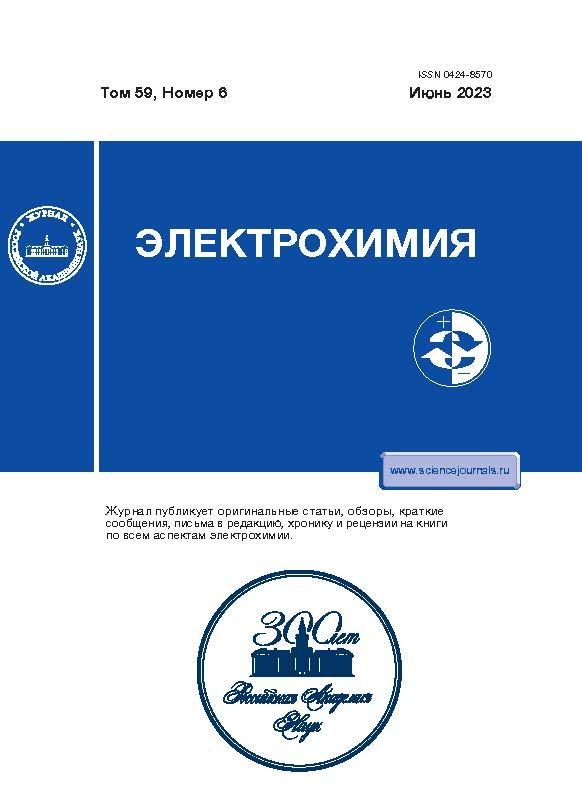A New Desiccant Based on Graphene Oxide for Deep Dehydration of Electrolytes for Electrochemical Cells
- Autores: Puntusova L.A.1, Kornilov D.Y.1
-
Afiliações:
- Research and Industrial Association Grafenika
- Edição: Volume 59, Nº 6 (2023)
- Páginas: 355-359
- Seção: Articles
- URL: https://cardiosomatics.ru/0424-8570/article/view/671016
- DOI: https://doi.org/10.31857/S042485702306004X
- EDN: https://elibrary.ru/PYEJGA
- ID: 671016
Citar
Texto integral
Resumo
A material based on graphene oxide is considered as a desiccant of aprotic solvents in nonaqueous electrolytes containing lithium salts. Three methods are proposed for preparation of final materials with different number and volume of pores. The effect of the initial parameters of hydrogel such as its pH and the concentration of solid substance is studied. Dependences of the adsorption capacity of desiccant on its porosity are plotted. The prospects of this new desiccant in dehydration of lithium electrolytes are discussed as compared with commercial molecular sieves.
Sobre autores
L. Puntusova
Research and Industrial Association Grafenika
Email: lyusya0912@gmail.com
Moscow, Russia
D. Kornilov
Research and Industrial Association Grafenika
Autor responsável pela correspondência
Email: lyusya0912@gmail.com
Moscow, Russia
Bibliografia
- Jansta, J., Dousek, F.P., and Riha, J., Electrochemical systems for galvanic cells in organic aprotic solvents. Quantitative evaluation of electrochemical effects of trace water in KPF6 – propylene carbonate electrolyte, Electroanalyt. Chem. and Interfac. Electrochem., 1973, vol. 44, p. 263.
- Астахов, М.В., Пунтусова, Л.А., Галимзянов, Р.Р., Кречетов, И.С., Лисицын, А.В., Свириденкова, Н.В., Стаханова, С.В. Многокомпонентные неводные электролиты для работы суперконденсаторов при повышенных температурах. Бутлеров. сообщ. 2020. Т. 61. № 1. С. 67.
- Bradley, D., Williams, G., and Lawton, M., Drying of Organic Solvents: Quantitative Evaluation of the Efficiency of Several Desiccants, Amer. Chem. Soc., 2010.
- Zhao, C., Ma, L., You, J., Qu, F., and Priestley, Rodney D., EDTA- and amine-functionalized graphene oxide as sorbents for Ni(II) removal, Desalinat. and Water Treatment, 2016, vol. 57, p. 8942.
- Ткачев, С.В., Буслаева, Е.Ю., Наумкин, А.В., Котова, С.Л., Лауре, И.В., Губин, С.П. Графен, полученный восстановлением оксида графена. Неорган. материалы. 2012. Т. 48. № 8. С. 909.
- Kornilov, D.Y. and Gubin, S.P., Graphene Oxide: Structure, Properties, Synthesis, and Reduction (A Review), Russ. J. Inorg. Chem., 2020, vol. 65, p. 1965. https://doi.org/10.1134/S0036023620130021
Arquivos suplementares















